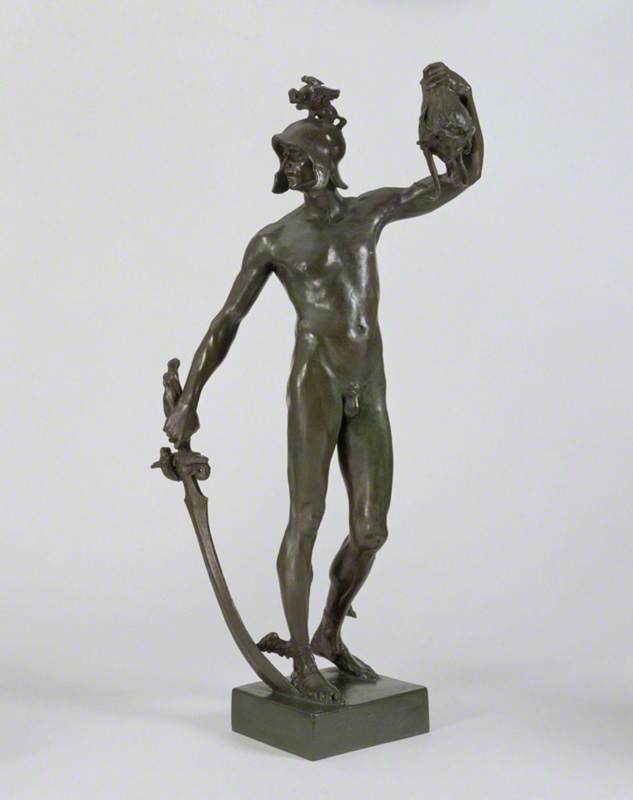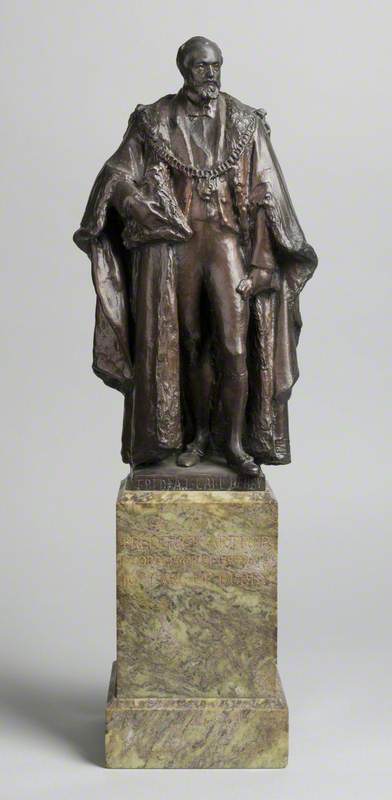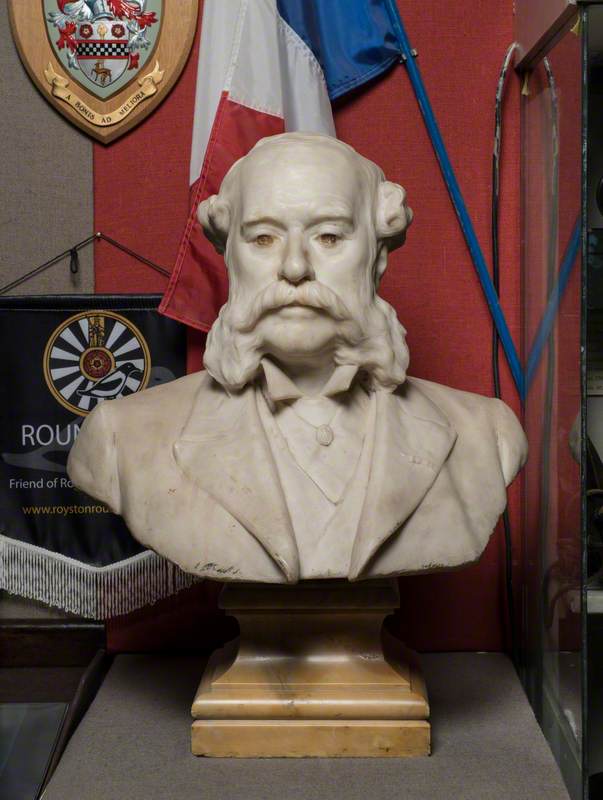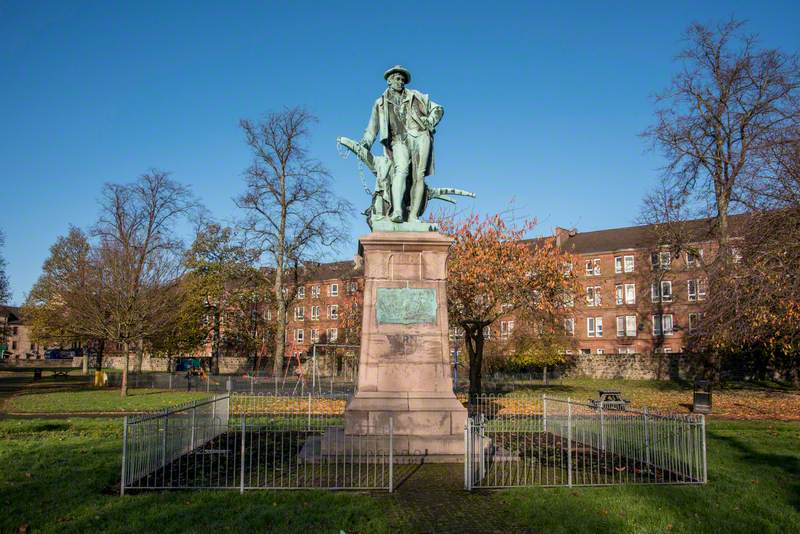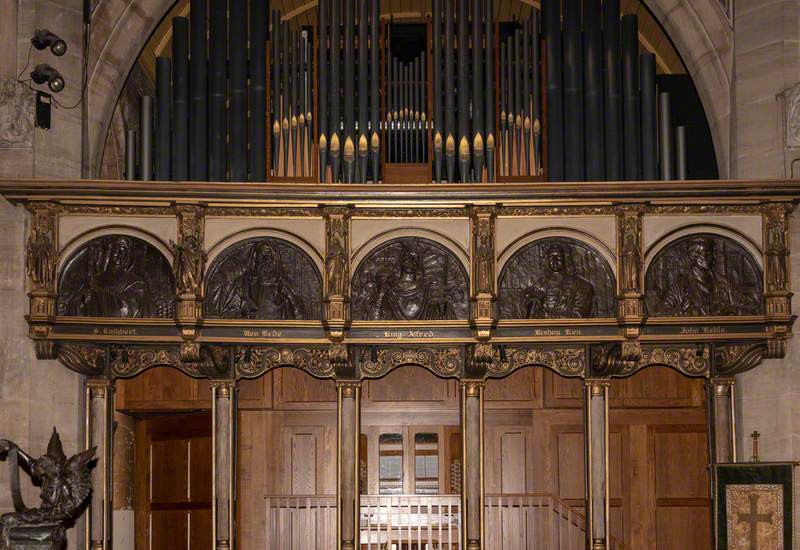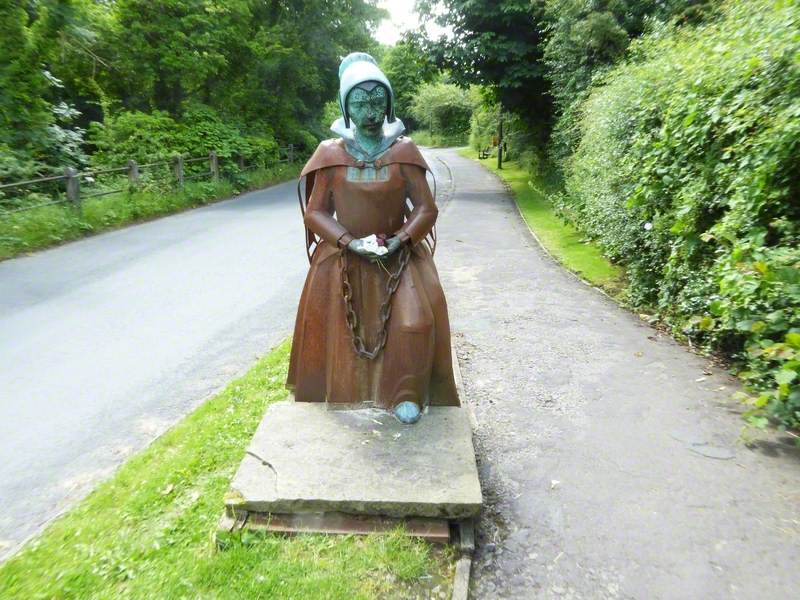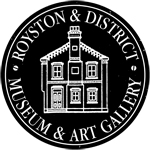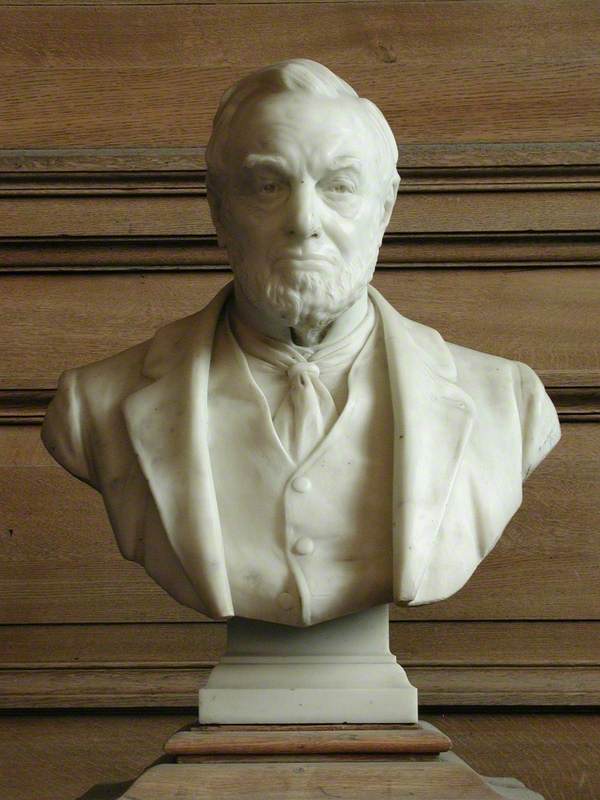
Frederick William Pomeroy [also known as F.W. Pomeroy] was born in Lambeth, Surrey [now London], England on 9 October 1856. He studied at Lambeth School of Art and, from 1881 to 1885, at the Royal Academy Schools in London where he won both a gold medal and a travel scholarship. After travelling in France and Italy, he returned to London and embarked on a career as a sculptor, metalworker, medallist stonecarver. He was a frequent exhibitor at the Royal Academy in London from 1885 to (posthumously) 1925. He also exhibited at the New Gallery, Royal Institute of Painters in Watercolours, Royal Society of British Artists, Royal Institute of Oil Painters, and International Society in London; Aberdeen Artists’ Society; Royal Glasgow Institute for the Fine Arts; Manchester City Art Gallery; Royal West of England Academy in Bristol; Leeds City Art Gallery; Walker Art Gallery in Liverpool; and at the Royal Scottish Academy in Edinburgh.
Pomeroy was elected a member of the Art Workers Guild in 1887, and was Master of the Guild in 1908. He was also elected an Associate of the Royal Academy (ARA) in 1906, and a Royal Academician (RA) in 1917; a member of the Royal Society of British Sculptors (RBS) in 1905; a Fellow of the Royal Society of British Sculptors (FRBS) in 1923; a member of the Arts and Crafts Exhibition Society in 1889; and a founding member of the Society of Portrait Sculptors in 1911. He was Vice-President of the Royal Society of British Sculptors from 1922 to 1924.
Notable among Pomeroy's commissions was the figure of Justice on the dome of the Old Bailey in London (1905-06). Other commissions included a statue of Robert Burns for Fountain Gardens, Paisley (1895); the Gordon Highlanders memorial for Duthie Park, Aberdeen (1898); a statue of Admiral Robert Blake for Cornhill in Bridgwater, Somerset (1900); a statue of Prime Minister William Ewart Gladstone for the lobby of the House of Commons (1900); a statue of Oliver Cromwell for Market Hill, St Ives, Cambridgeshire (1901); a statue of Queen Victoria for Chester Castle, Cheshire (1903); a statue of Robert Burns for The Domain, Sydney, New South Wales (1905); a statue of Queen Victoria for Woolwich Town Hall, London (1905); a Boer War memorial for The Great Hall, Guildhall, London (1907); a statue of Francis Bacon for South Square, Gray's Inn, London (1908); a statue of Thomas Guthrie for West Princes Street Gardens, Edinburgh (1910); World War One war memorials for Ramsey, Cambridgeshire (1921), Coleraine, County Londonderry (1922), Kensington High Street, London (1922), and Inver Park, Larne, County Antrim (1922). Pomeroy also produced numerous portrait busts and statuettes including of Oliver Cromwell (1922).
Many of Pomeroy's decorative architectural commissions came from the architect John Dando Sedding (1838-1891) and the architect-designer Henry Wilson (1864 -1934) who took over Sedding's practice following his death.
Pomeroy taught for a period at the Architectural Association in London [dates not known].
His address was given as 68 Hercules Buildings, Lambeth, London in 1871 and 1885; 10, Fentiman Road, Clapham, London in 1885 and 1888; 31, Devonshire Street, Portland Place in 1889; and 1892; 1, Wentworth Studios, Manresa Road in 1893 and 1903; 15 Douro Place, Victoria Road, Kensington, London in 1904 and 1906; and 15 Kensington Square, London in 1907 and 1924. He died in Cliftonville, Kent, on 26 May 1924.
Text source: Arts + Architecture Profiles from Art History Research net (AHRnet) https://www.arthistoryresearch.net/

